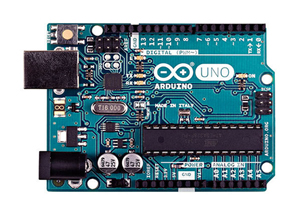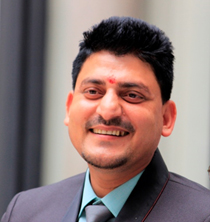 Dr. Rajesh Singh is currently associated with Lovely Professional University as Professor with more than fifteen years of experience in academics. He has been awarded as gold medalist in M.Tech and honors in his B.E. His area of expertise includes embedded systems, robotics, wireless sensor networks and Internet of Things. He has organized and conducted a number of workshops, summer internships and expert lectures for students as well as faculty. He has twenty three patents in his account. He has published around hundred research papers in referred journals/conferences.
Dr. Rajesh Singh is currently associated with Lovely Professional University as Professor with more than fifteen years of experience in academics. He has been awarded as gold medalist in M.Tech and honors in his B.E. His area of expertise includes embedded systems, robotics, wireless sensor networks and Internet of Things. He has organized and conducted a number of workshops, summer internships and expert lectures for students as well as faculty. He has twenty three patents in his account. He has published around hundred research papers in referred journals/conferences.
Under his mentorship students have participated in national/international competitions including Texas competition in Delhi and Laureate award of excellence in robotics engineering in Spain. Twice in last four years he has been awarded with certificate of appreciation and Best Researcher award- 2017 from University of Petroleum and Energy Studies for exemplary work. He got certificate of appreciation for mentoring the projects submitted to Texas Instruments Innovation challenge India design contest, from Texas Instruments, in 2015.He has been honored with young investigator award at the International Conference on Science and Information in 2012. He has published ten books in the area of Embedded Systems and Internet of Things with reputed publishers like CRC/Taylor & Francis, Narosa, GBS, IRP, NIPA and RI publication. He is editor to a special issue published by AISC book series, Springer with title Intelligent Communication, Control and Devices-2017 & 2018.
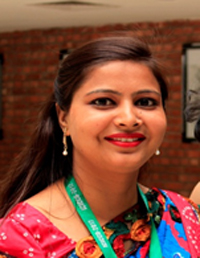 Dr. Anita Gehlot is currently associated with Lovely Professional University as Associate Professor with more than ten years of experience in academics. She has twenty patents in her account. She has published more than fifty research papers in referred journals and conference. She has organized a number of workshops, summer internships and expert lectures for students. She has been awarded with certificate of appreciation from University of Petroleum and Energy Studies for exemplary work. She has published ten books in the area of Embedded Systems and Internet of Things with reputed publishers like CRC/Taylor & Francis, Narosa, GBS, IRP, NIPA and RI publication. She is editor to a special issue published by AISC book series, Springer with title Intelligent Communication, Control and Devices-2018.
Dr. Anita Gehlot is currently associated with Lovely Professional University as Associate Professor with more than ten years of experience in academics. She has twenty patents in her account. She has published more than fifty research papers in referred journals and conference. She has organized a number of workshops, summer internships and expert lectures for students. She has been awarded with certificate of appreciation from University of Petroleum and Energy Studies for exemplary work. She has published ten books in the area of Embedded Systems and Internet of Things with reputed publishers like CRC/Taylor & Francis, Narosa, GBS, IRP, NIPA and RI publication. She is editor to a special issue published by AISC book series, Springer with title Intelligent Communication, Control and Devices-2018.
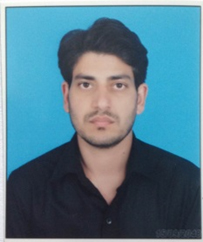 Bhupendra Singh is Managing director of Schematics Microelectronics and provides Product design and R&D support to industries and Universities. He has completed BCA, PGDCA, M.Sc. (CS), M.Tech and has more than eleven years of experience in the field of Computer Networking and Embedded systems. He has published ten books in the area of Embedded Systems and Internet of Things with reputed publishers like CRC/Taylor & Francis, Narosa, GBS, IRP, NIPA and RI publication.
Bhupendra Singh is Managing director of Schematics Microelectronics and provides Product design and R&D support to industries and Universities. He has completed BCA, PGDCA, M.Sc. (CS), M.Tech and has more than eleven years of experience in the field of Computer Networking and Embedded systems. He has published ten books in the area of Embedded Systems and Internet of Things with reputed publishers like CRC/Taylor & Francis, Narosa, GBS, IRP, NIPA and RI publication.
 Dr. S. Choudhury is the Head of the Department of Electronics, Instrumentation, and Control in the University of Petroleum and Energy Studies. He has teaching experience of 26 years and he has completed his Ph.D from the University of Petroleum and Energy Studies, M.Tech (Gold Medalist) from Tezpur Central University, Tezpur, India and received his B.E. degree from NIT, Silchar University, India. He has published more than 70 papers in various national/international conferences/journals. He has filed ten patents. His area of interest is Zigbee-based wireless networks. He has been selected as the outstanding scientist of the twenty-first century by the Cambridge Biographical Centre, UK. He has also been selected in the whos who of the world in science by Marquis Whos Who, USA. He has published three books in the area of Embedded Systems with reputed publishers like CRC/Taylor & Francis, Narosa and RI publication.
Dr. S. Choudhury is the Head of the Department of Electronics, Instrumentation, and Control in the University of Petroleum and Energy Studies. He has teaching experience of 26 years and he has completed his Ph.D from the University of Petroleum and Energy Studies, M.Tech (Gold Medalist) from Tezpur Central University, Tezpur, India and received his B.E. degree from NIT, Silchar University, India. He has published more than 70 papers in various national/international conferences/journals. He has filed ten patents. His area of interest is Zigbee-based wireless networks. He has been selected as the outstanding scientist of the twenty-first century by the Cambridge Biographical Centre, UK. He has also been selected in the whos who of the world in science by Marquis Whos Who, USA. He has published three books in the area of Embedded Systems with reputed publishers like CRC/Taylor & Francis, Narosa and RI publication.
Introduction to Arduino, Arduino IDE and Proteus Software
Rajesh Singh,Anita Gehlot,Bhupendra Singh,Sushabhan ChoudhuryAbstract
Arduino is an open source platform and easy to use software. The chapter is about to discuss the advantages of Arduino with brief description to each Arduino board including UNO, MEGA and NANO. Arduino Integrated Development Environment is used to write the program for Arduino, this chapter elaborates step to step description of writing and compiling the program. Proteus simulator is also introduced, which is used for checking the feasibility of program and working of the designed system without actual implementation on hardware. Design steps are described for the beginners.
Keywords: Arduino, Arduino IDE, Open Source Platform.
Arduino is a user friendly open-source platform. Arduino has on board microcontroller and IDE is used to program it. As compared to similar platforms it is easy to program and has many advantages over them.
Advantages
Low Cost - Arduino boards are of relatively low-cost as compared to other microcontroller platforms.
Cross-platform - The Arduino Software (IDE) is compatible with Windows, Macintosh OSX, and Linux operating systems, which most of microcontroller systems are not.
User Friendly - The Arduino Software (IDE) is user friendly and easy-to-use for beginners and much flexibility for skilled programmers.
Open Source - The Arduino is an open source software and can be programmed with C, C++ or AVR-C languages. So a variety of modules can be designed by users.
Arduino platform comprises of a microcontroller. It can be connected to PCvia a USB cable.It is freelyaccessible and can beeasilydownloadedfrom
http://www.arduino.org/downloads. It can also be modified by the programmer. In the market different versions of Arduino boards are available and depending on the requirement of user.
1.1. Arduino Uno
The Arduino/Genuino Uno has on board ATmega328 microcontroller. It has on board six analog input ports (A0-A5). Each pin can operate on 0-5V of voltage. It has 14 digital I/O pins out of which 6 are PWM output, 6 analog inputs, 2 KB SRAM, 1 KB EEPROM and operates at 16 MHz of frequency. Table ) shows the Arduino Uno board.
Fig. (1.1)) Arduino Uno Board.
Table 1.1
Pin Description of Arduino UNO.| Pin | Description |
|---|
| Vin | The external voltage to the Arduino board. |
| +5V | Output a regulated 5V |
| 3.3 V | On board 3.3 volt supply |
| GND | Ground |
| IOREF | provides the voltage reference and select appropriate power source |
| Serial | Transmits and receives serial data, Pins: 0(Rx) 1(Tx) |
| External Interrupts |

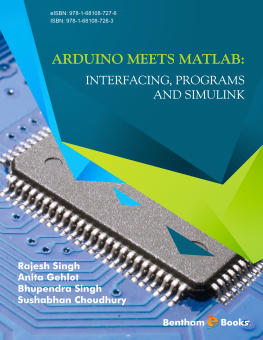

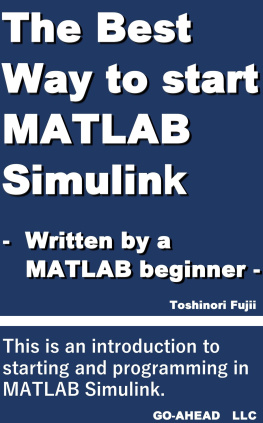
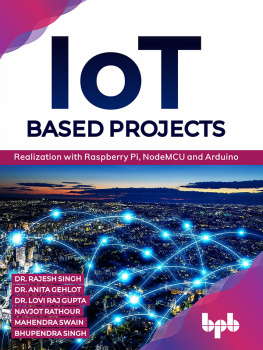
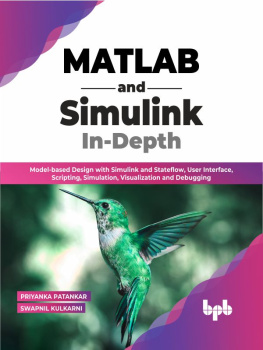

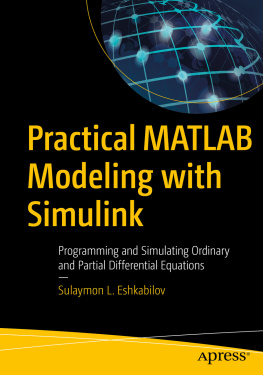

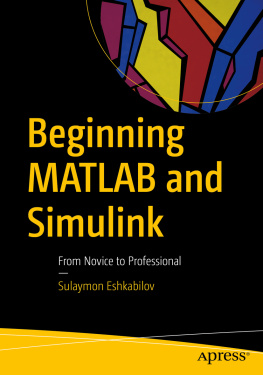
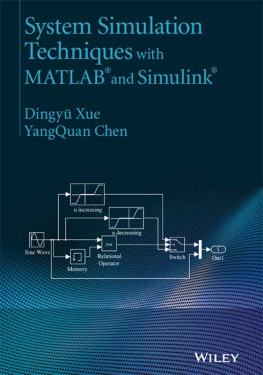
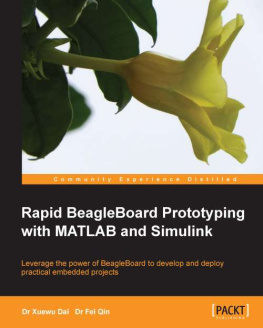

 Dr. Rajesh Singh is currently associated with Lovely Professional University as Professor with more than fifteen years of experience in academics. He has been awarded as gold medalist in M.Tech and honors in his B.E. His area of expertise includes embedded systems, robotics, wireless sensor networks and Internet of Things. He has organized and conducted a number of workshops, summer internships and expert lectures for students as well as faculty. He has twenty three patents in his account. He has published around hundred research papers in referred journals/conferences.
Dr. Rajesh Singh is currently associated with Lovely Professional University as Professor with more than fifteen years of experience in academics. He has been awarded as gold medalist in M.Tech and honors in his B.E. His area of expertise includes embedded systems, robotics, wireless sensor networks and Internet of Things. He has organized and conducted a number of workshops, summer internships and expert lectures for students as well as faculty. He has twenty three patents in his account. He has published around hundred research papers in referred journals/conferences. Dr. Anita Gehlot is currently associated with Lovely Professional University as Associate Professor with more than ten years of experience in academics. She has twenty patents in her account. She has published more than fifty research papers in referred journals and conference. She has organized a number of workshops, summer internships and expert lectures for students. She has been awarded with certificate of appreciation from University of Petroleum and Energy Studies for exemplary work. She has published ten books in the area of Embedded Systems and Internet of Things with reputed publishers like CRC/Taylor & Francis, Narosa, GBS, IRP, NIPA and RI publication. She is editor to a special issue published by AISC book series, Springer with title Intelligent Communication, Control and Devices-2018.
Dr. Anita Gehlot is currently associated with Lovely Professional University as Associate Professor with more than ten years of experience in academics. She has twenty patents in her account. She has published more than fifty research papers in referred journals and conference. She has organized a number of workshops, summer internships and expert lectures for students. She has been awarded with certificate of appreciation from University of Petroleum and Energy Studies for exemplary work. She has published ten books in the area of Embedded Systems and Internet of Things with reputed publishers like CRC/Taylor & Francis, Narosa, GBS, IRP, NIPA and RI publication. She is editor to a special issue published by AISC book series, Springer with title Intelligent Communication, Control and Devices-2018. Bhupendra Singh is Managing director of Schematics Microelectronics and provides Product design and R&D support to industries and Universities. He has completed BCA, PGDCA, M.Sc. (CS), M.Tech and has more than eleven years of experience in the field of Computer Networking and Embedded systems. He has published ten books in the area of Embedded Systems and Internet of Things with reputed publishers like CRC/Taylor & Francis, Narosa, GBS, IRP, NIPA and RI publication.
Bhupendra Singh is Managing director of Schematics Microelectronics and provides Product design and R&D support to industries and Universities. He has completed BCA, PGDCA, M.Sc. (CS), M.Tech and has more than eleven years of experience in the field of Computer Networking and Embedded systems. He has published ten books in the area of Embedded Systems and Internet of Things with reputed publishers like CRC/Taylor & Francis, Narosa, GBS, IRP, NIPA and RI publication. Dr. S. Choudhury is the Head of the Department of Electronics, Instrumentation, and Control in the University of Petroleum and Energy Studies. He has teaching experience of 26 years and he has completed his Ph.D from the University of Petroleum and Energy Studies, M.Tech (Gold Medalist) from Tezpur Central University, Tezpur, India and received his B.E. degree from NIT, Silchar University, India. He has published more than 70 papers in various national/international conferences/journals. He has filed ten patents. His area of interest is Zigbee-based wireless networks. He has been selected as the outstanding scientist of the twenty-first century by the Cambridge Biographical Centre, UK. He has also been selected in the whos who of the world in science by Marquis Whos Who, USA. He has published three books in the area of Embedded Systems with reputed publishers like CRC/Taylor & Francis, Narosa and RI publication.
Dr. S. Choudhury is the Head of the Department of Electronics, Instrumentation, and Control in the University of Petroleum and Energy Studies. He has teaching experience of 26 years and he has completed his Ph.D from the University of Petroleum and Energy Studies, M.Tech (Gold Medalist) from Tezpur Central University, Tezpur, India and received his B.E. degree from NIT, Silchar University, India. He has published more than 70 papers in various national/international conferences/journals. He has filed ten patents. His area of interest is Zigbee-based wireless networks. He has been selected as the outstanding scientist of the twenty-first century by the Cambridge Biographical Centre, UK. He has also been selected in the whos who of the world in science by Marquis Whos Who, USA. He has published three books in the area of Embedded Systems with reputed publishers like CRC/Taylor & Francis, Narosa and RI publication.